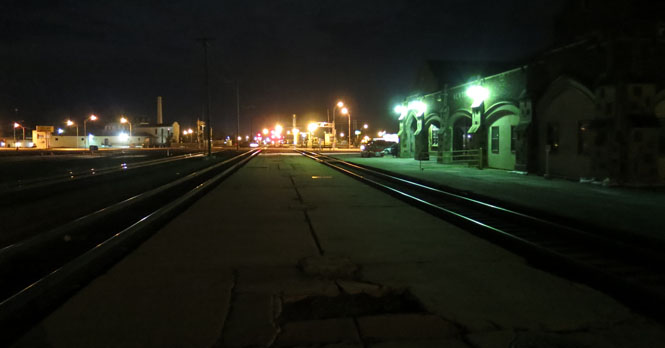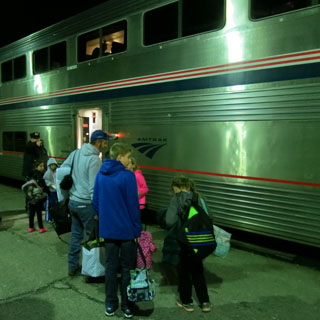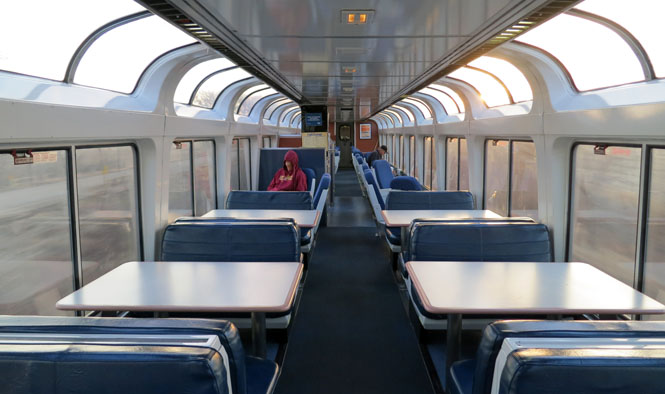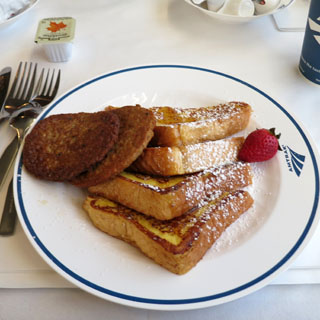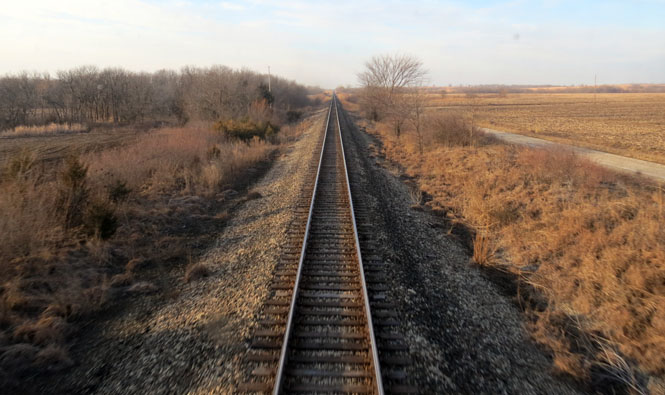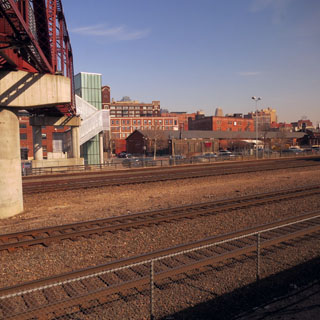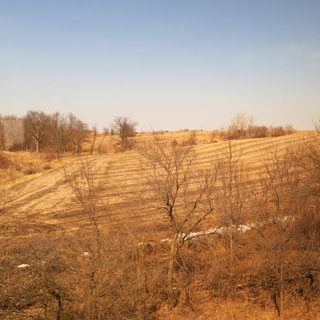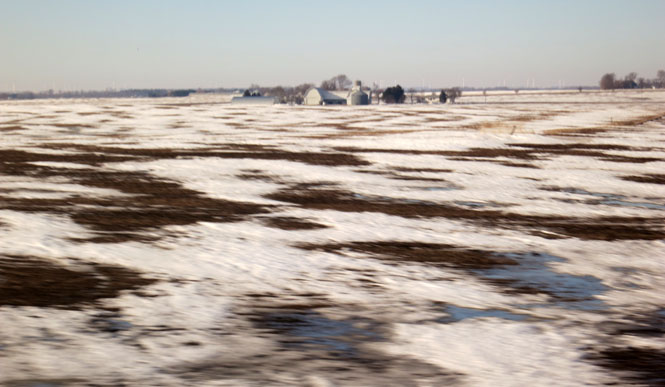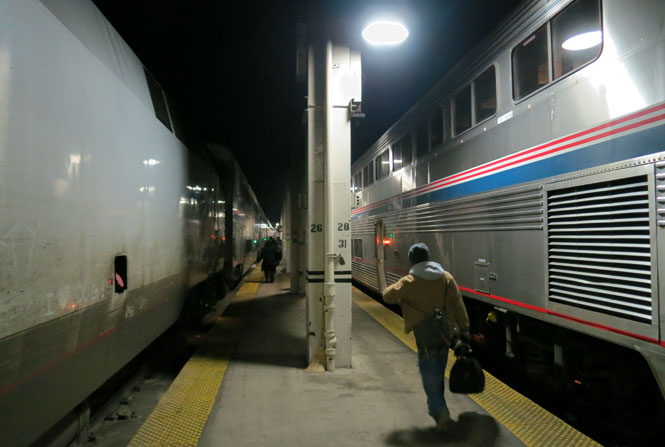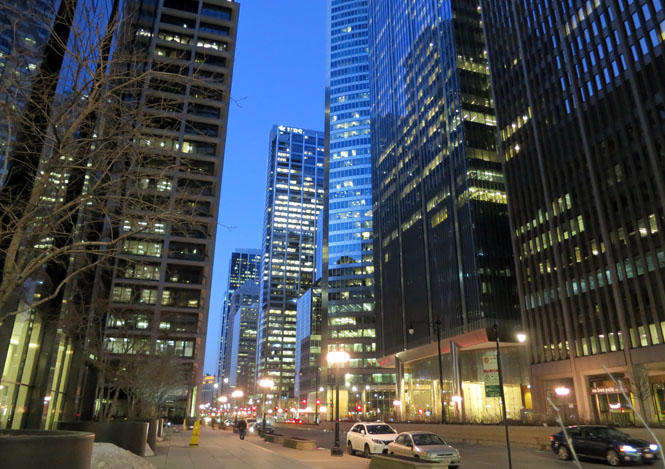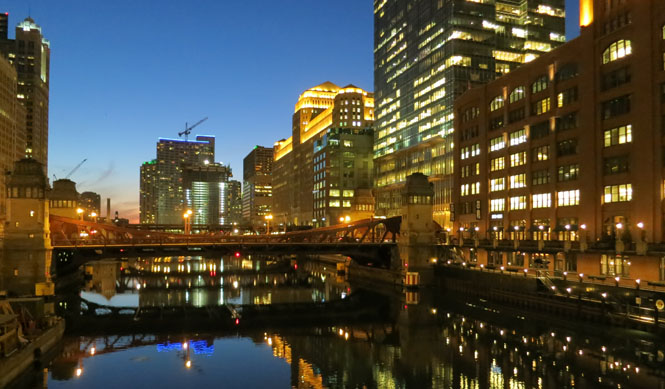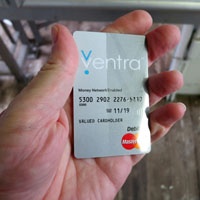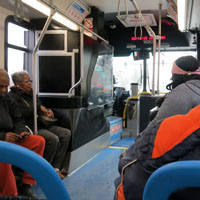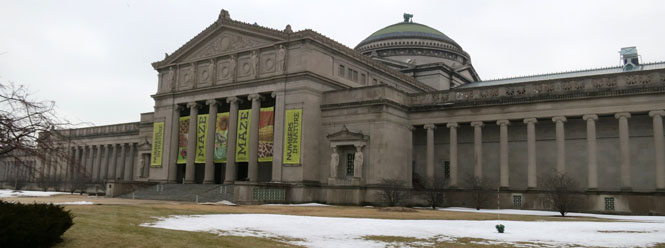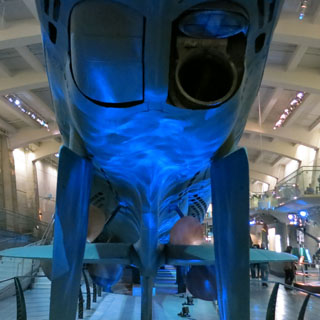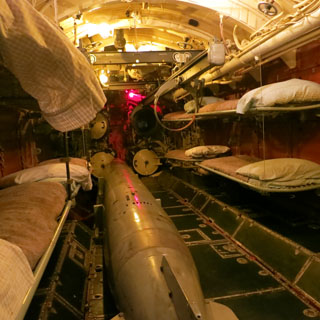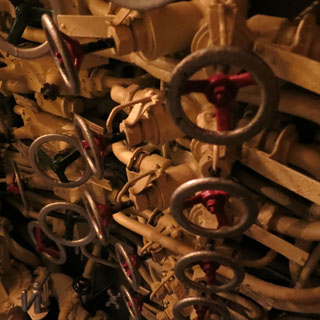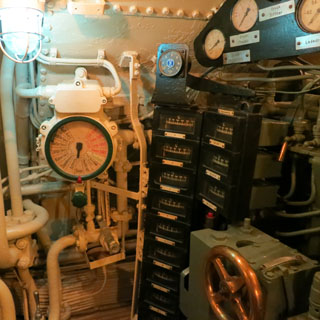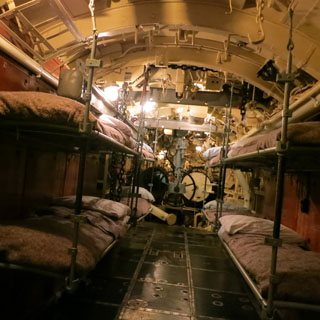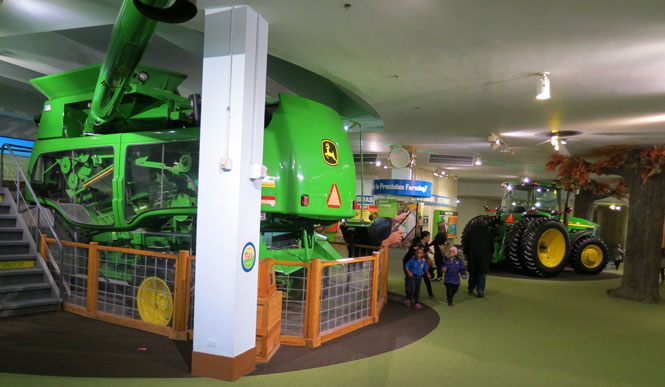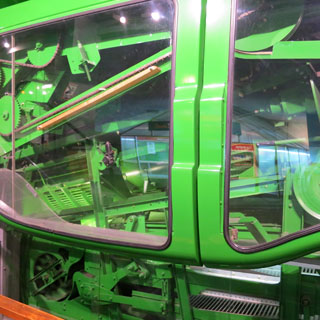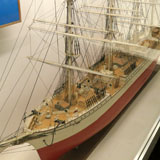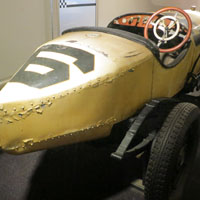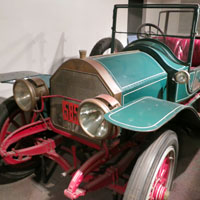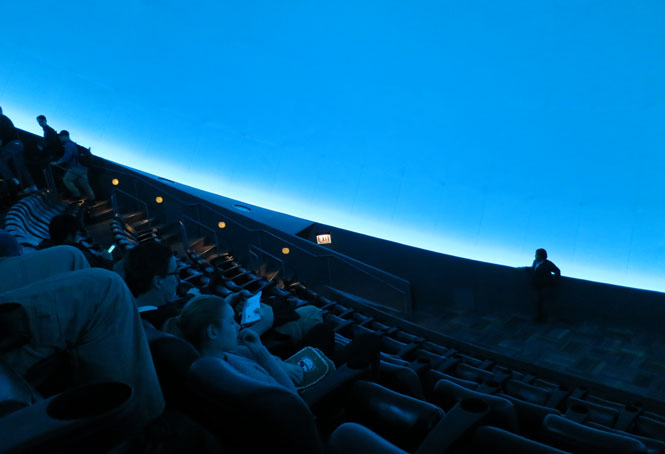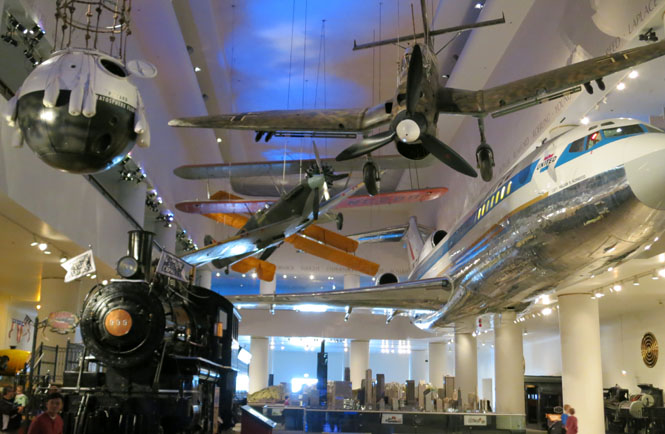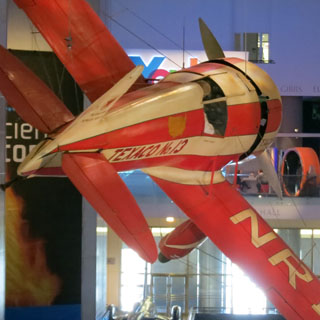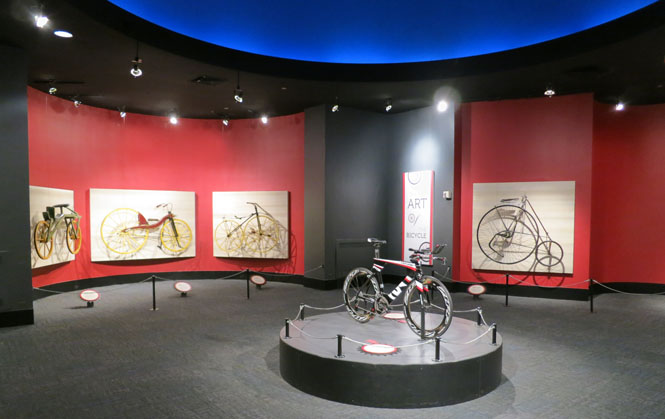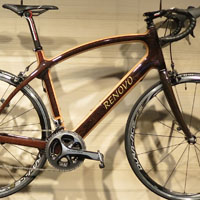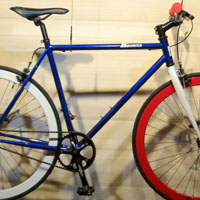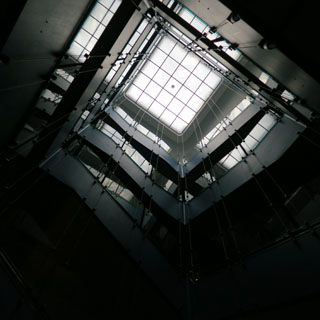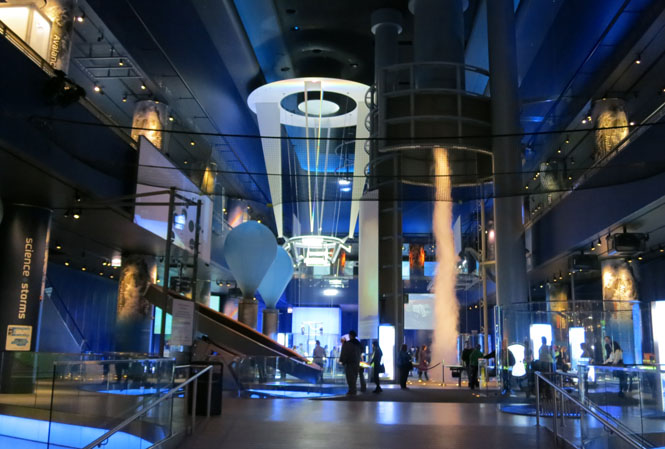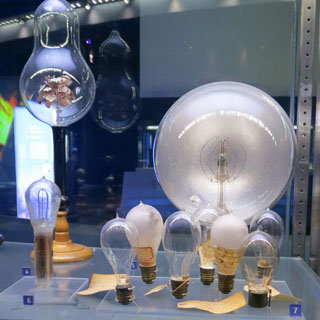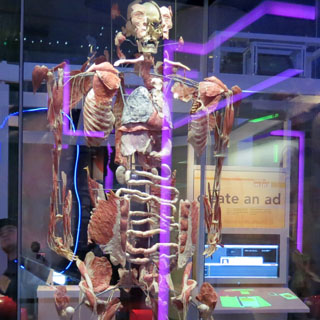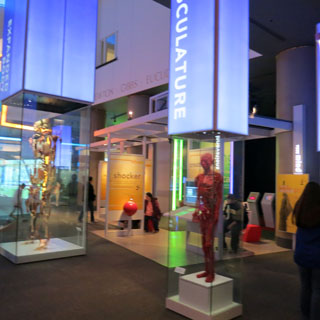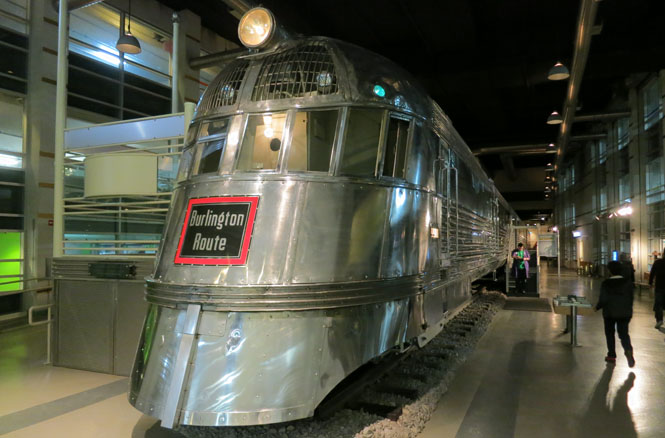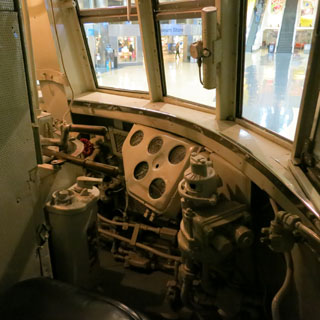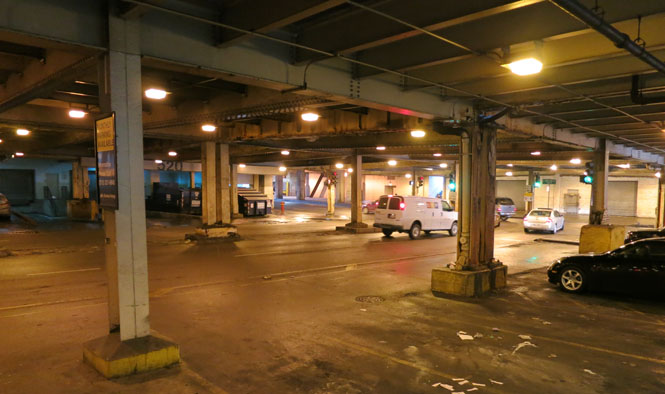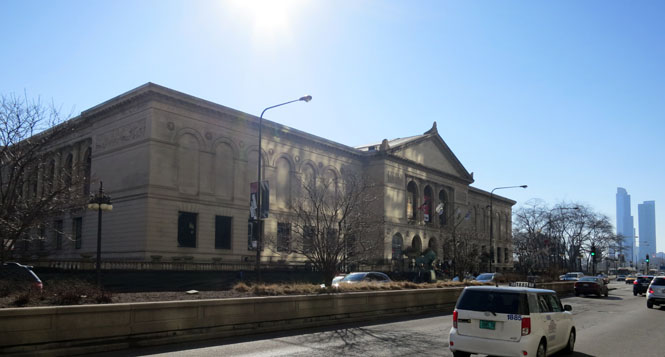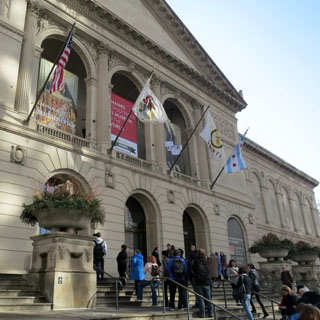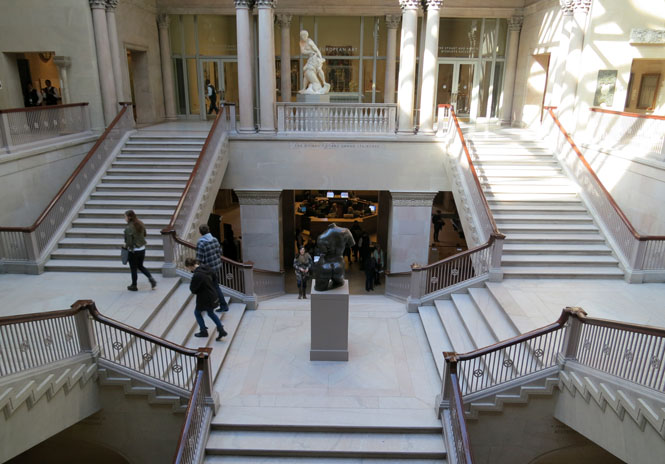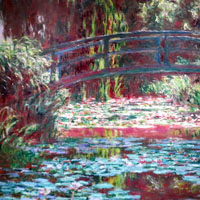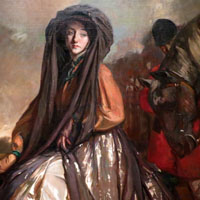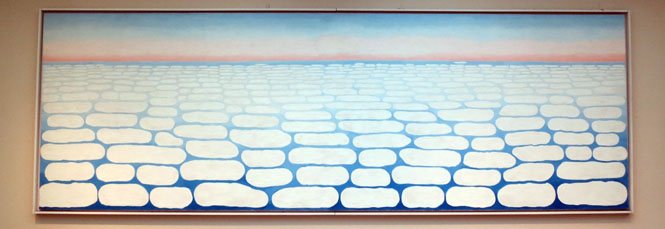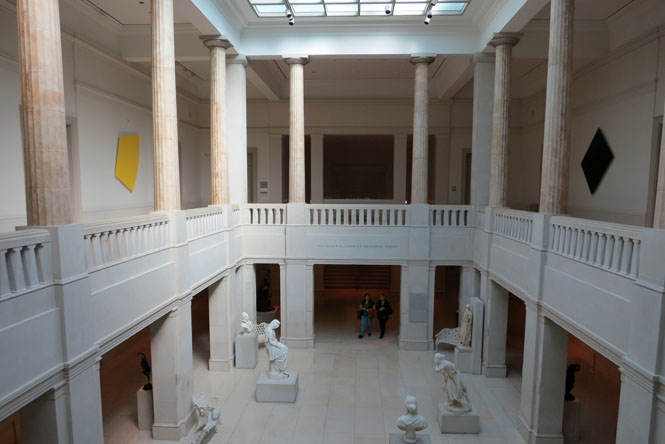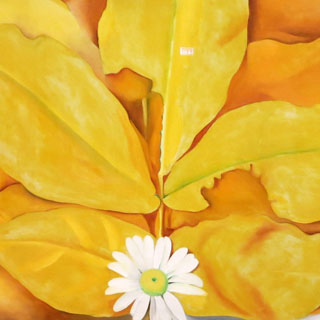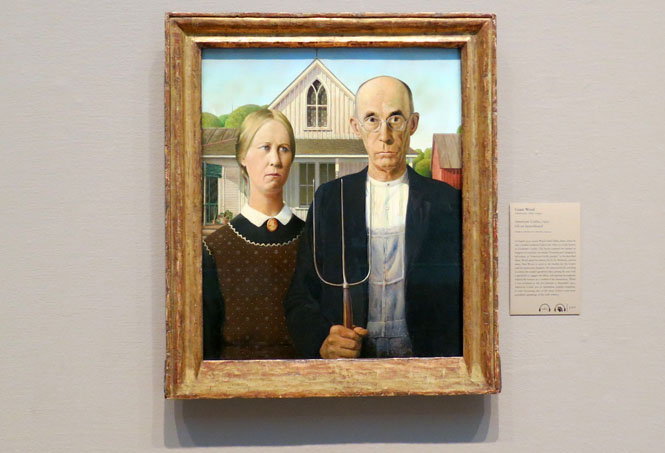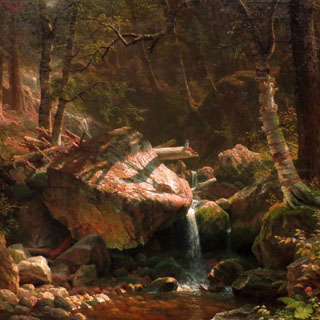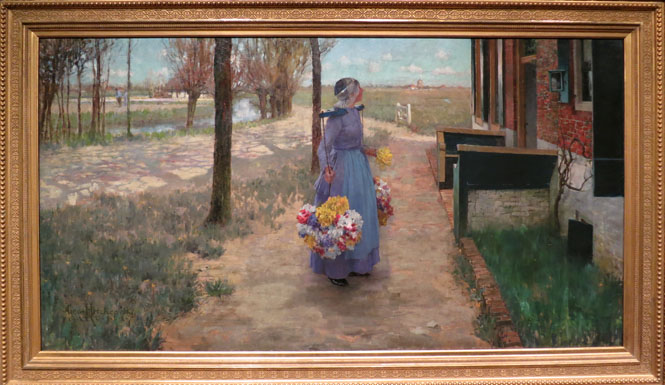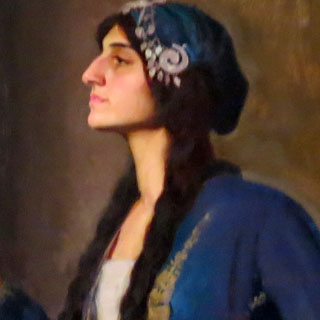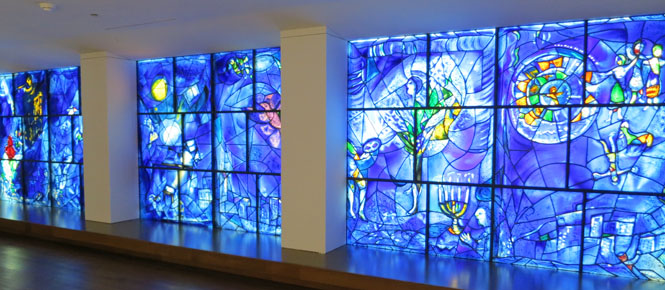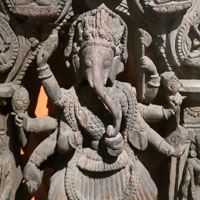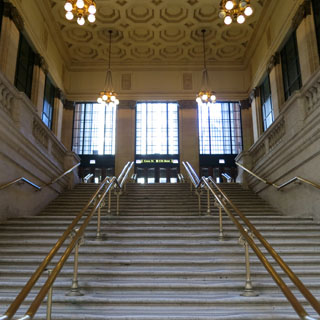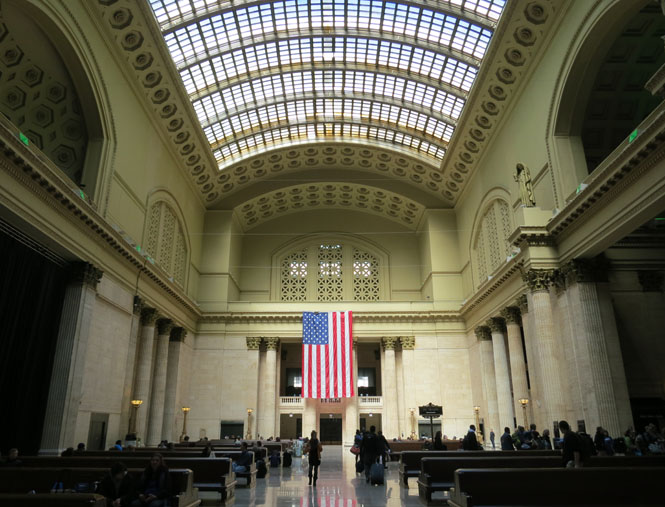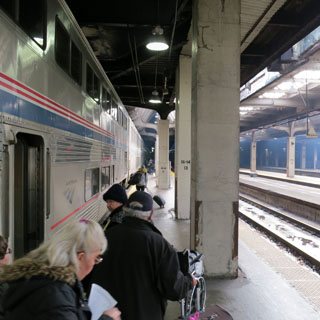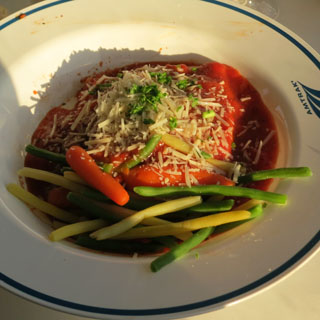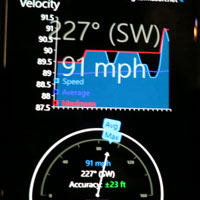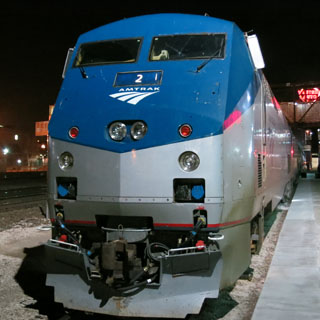March, 2015

The passenger rail network throughout the United States is not what it once was, but if you want to travel between Newton, Kansas and Chicago, Illinois, you can't complain too much (even if the schedule is just a once-per-day thing). This was a quick trip to Chicago to see the Science and Industry museum.
 Kansas
Kansas
The eastbound Southwest Chief leaves Newton at 3:00 am. This is inconvenient, but made even more-so by the fact that a (prank) bomb-scare halted the train's progress in Garden City, Kansas while all the passengers were taken off and the train fully inspected.
The morning was very cold. The sun was just rising when the train finally arrived.
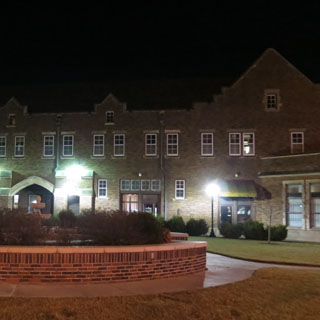
Early morning on the observation deck. A nice outcome of the delay meant that the train would be running through Kansas and Missouri (and, indeed the entire route) in daylight.
Reservations are not needed for breakfast. I had the French toast with sausage--pretty good.
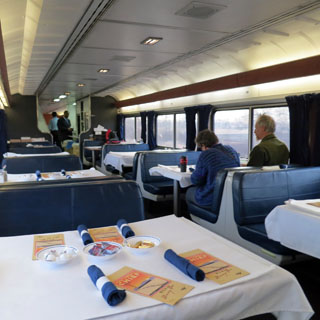
The view looking out the rear of the last car as we run northeast out of Emporia, Kansas.
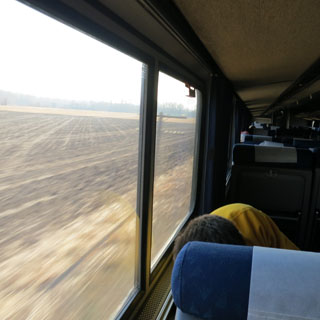
 Missouri
Missouri
There's a longer break in Kansas City as the train refuels.
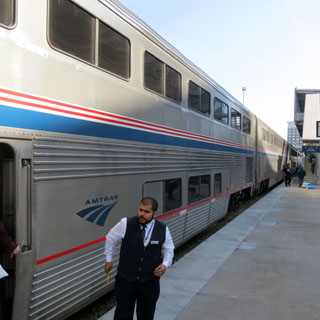
 Iowa
Iowa
More and more snow is still on the ground the closer we get to Chicago.


 Illinois
Illinois
 Chicago
Chicago
The first glimpse of the city.
The tracks into Union Station run under the buildings.
It's twilight in Chicago. My hotel isn't too far to walk--just follow the river towards the lake and turn left on State Street to Ontario.
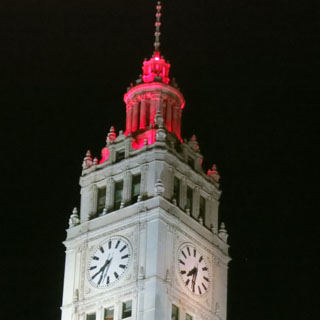
A deep dish pizza at Pizzeria Due.

Up early the next morning. I've taken a lot of photographs of towns while standing in the middle of the road, but this might be the largest city where I've done that.
The city transit system could not be easier. At the self-service machine you buy your Ventra card, which can then be used on buses and on the 'L' trains. There are several options for purchase; I loaded it with a day-pass to cover the next two days.
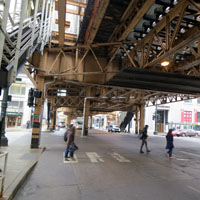
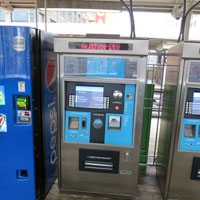
Waiting for the Green Train on the 'L' along the Loop. That's the train in the middle photograph (below) and the bus on the right. It took just one train and one bus to get to the Museum. Easy.
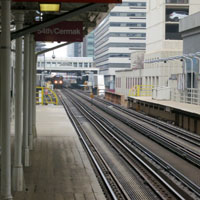
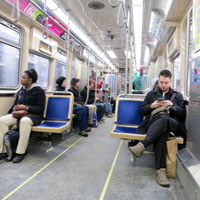
The Museum of Science and Industry. That grand entrance is no longer used. Instead, there is a much more modern entrance well in front of this building and stairs that take you below ground.
One of the things that brought me here is this exhibit of the German U-boat U-505. This boat was captured during World War 2 before the crew was able to scuttle it. It's a stunning thing to see.

The interior is complete. Evidently, when the exhibit was being prepared, the original German companies were contacted to ask if they could supply the equipment that had been stripped from the submarine during the years after the war. They were all pleased to offer what help they could. The whole thing is really amazing.
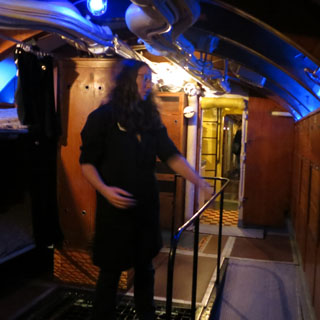
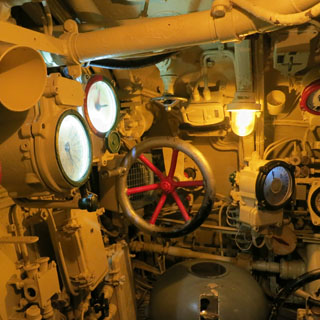
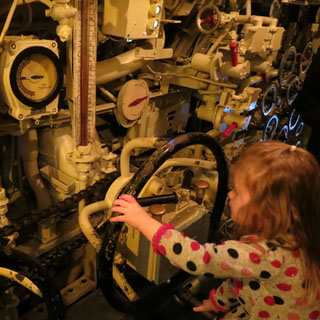

A science and industry museum is much more difficult to maintain than a simple history museum. At least with a history museum, if you stop any maintenance on the exhibits (because you've run out of money), what's there still remains relevant. Not so, for a museum that wants to always present the current state-of-the art.

But, here and there, are exhibits that reflect somebody's old collection of "stuff." This isn't what the museum is all about, but I'm glad it's here. This is an extensive collection of ship models.
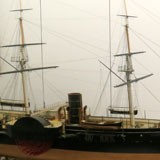
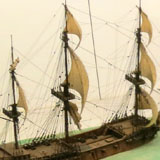
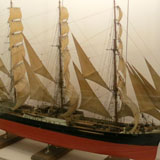
What ties these old (and not quite so old) race cars together is that they all have some connection to the Chicago Midwest.
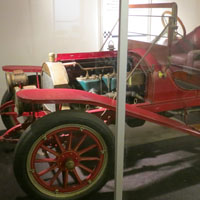
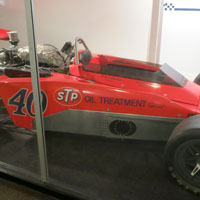
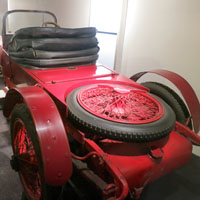

The dome theater was showing a film on D-Day. It was well done, and had many useful fly-over shots of Normandy (I recognized many of the places). There's really only one seat in the house that a dome theater "works", I would have been just as happy with a conventional large screen.
What an odd assortment of equipment they've got! More to the point of the museum, they had an up-to-date exhibit of flight simulators and navigational equipment on display.

This is a very large building with more wings and rooms than you might find without a map. Many of the exhibits are strung together in series--you need to walk through one to get to the next; and, you must return the way you came.
This illuminated globe showed moving images of earth-science. In this case, it's showing the global response to an earthquake in the Pacific. That must be a remarkable projector inside the globe.
The Art of the Bicycle is an exhibit that seems to have taken its lead from the Art of the Motorcycle exhibit of several years back.

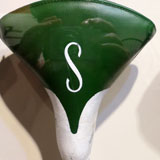

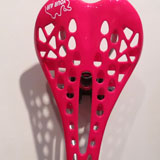
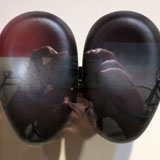
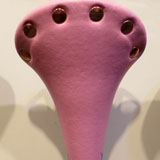
Some of these make sense; some don't.
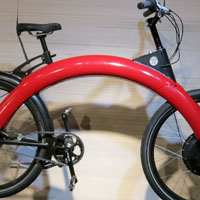

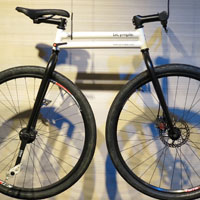
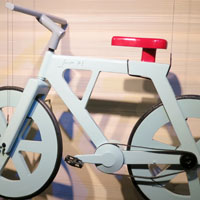
Every science museum must have a periodic chart that has examples of every (safe and available) element. This is a good one.
And, every science museum must also have a very long pendulum that shows that our earth is indeed rotating. This one doesn't knock over little pegs as does (or did?) the one in San Francisco. That would have been a nice touch.
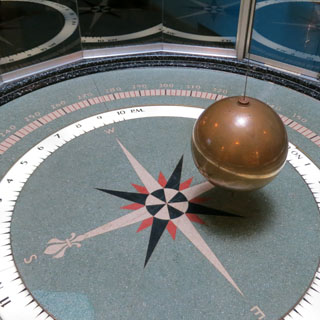
The science of storms. What an effort this would have been to create! All sorts of hands-on exhibits that explain all sorts of scientific principles. You could superficially walk through and just look at things moving around, or you could spend a few hours here if you wanted to play with all the experiments.
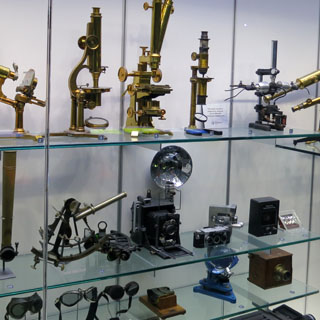
The human body sliced and dyed and sliced again (intestines are really, really long).


One of the early stainless steel streamliners was built for the Chicago World's Fair. And, it's all still here. Remarkable.
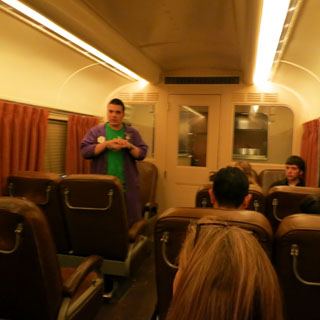
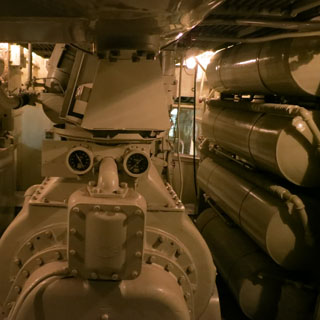
I'm not sure if the train set the example for the home appliances, or if was just a grand trend of the times, but lots of common items were subsequently designed to look like that train.
Back on the elevated platform to take the Green Train back into town (my bus driver advised against the Red Train).
"Cloud Gate" a sculpture by Anish Kapoor in Millennium Park. For obvious reasons, it's more commonly called "The Bean"
Several of Chicago's streets seem to have a counterpart under street level. A person with experience would really have an advantage around here. GPS reception would be a problem for the rest of us. On foot, it's easy.
Looking back from the Navy Pier.
What is the significance of this Chicago street (where I am again standing in the middle) and this location? It's the start of Route-66.
The Art Institute of Chicago is unquestionably one of the great art museums of the world.

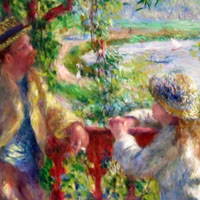

Well-behaved school children and an enthusiastic guide. She's talking about little dots and what they mean.
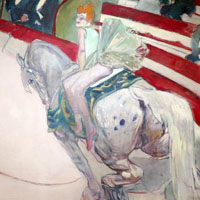
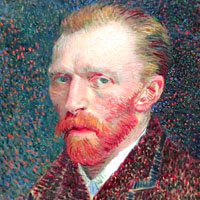

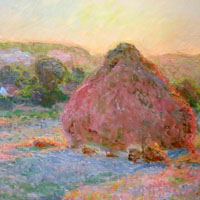
A map is a requirement if you intend to find anything in particular or if you intend to find your way out of the building with any efficiency. Like most all art museums, this one was built in stages. It doesn't help that there are railroad tracks that run through the middle, which means it's not so obvious how to get from one wing to the next. Sometimes going up (or down) is the only way to go forward.
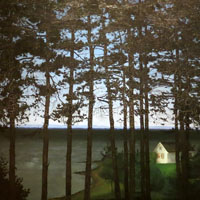
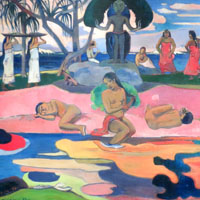

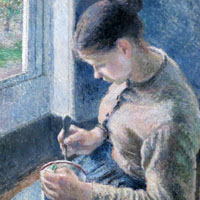
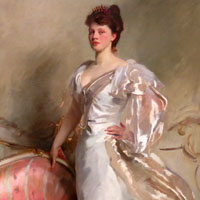
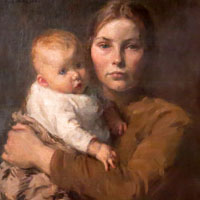

I think I've seen this one...
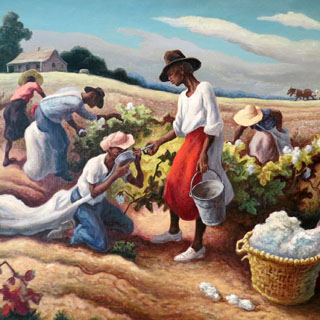
...and, this one.
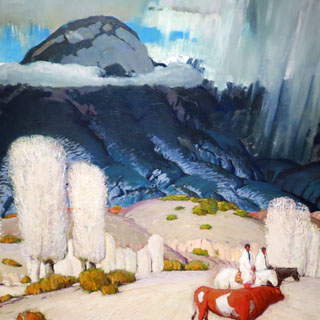


Having lunch in one of the museum cafes.
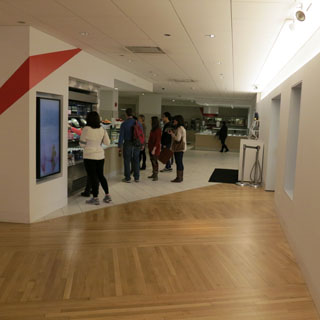

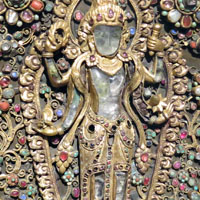
It's been a quick and productive trip. Now, it's time to return to Union Station.
Union Station was built in 1925. It's big.

If you're here for an Amtrak train, you'll probably want to wait here.
We all followed our leader (in a long single line that reminded me of recess in elementary school) to our platform and then our train.
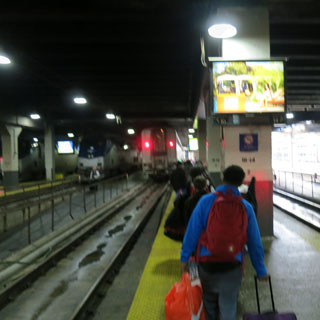
Dinner onboard. I'm having lasagna with wine.
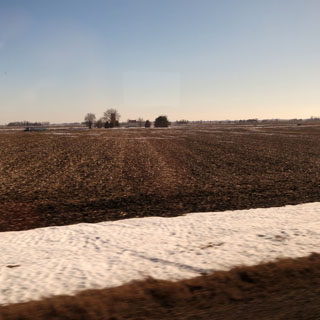
The train was almost always running faster than 70 mph, and often maintained an even 90 mph. Unlike the trip out (with the long delay), every station on the return was precisely on schedule.

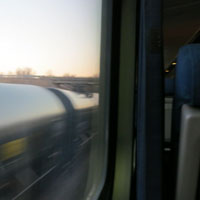

That was nice. Hop on the train to Chicago, see a few things, and return without much fuss at all.

